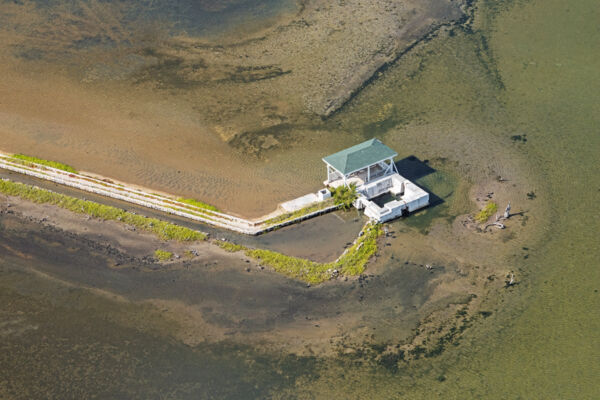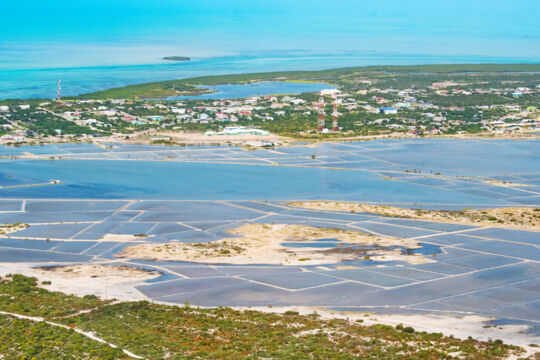The Boiling Hole
South Caicos
The Boiling Hole is a naturally formed subterranean underwater fissure passage that connects the ocean to the main salina pond on South Caicos. This formation was taken advantage of by early sea salt producers, who converted it to feed seawater into the salt pans to be evaporated.
The name Boiling Hole was derived from the agitated state of the water when flowing in through the hole during high tide.
Today, you can walk out to the Boiling Hole from the Cockburn Harbour side of the main salina. A 20-foot-wide (6 m) low white concrete structure surrounds the feature, along with the remains of gates to control the water output. A gazebo adjacent to the structure provides shade.
The Boiling Hole is one of the main attractions to visit when exploring South Caicos.
How Did the Subterranean Cave Form?
As is the case with nearly all of the sinkholes, blue holes, and caves found in the Turks and Caicos, the Boiling Hole was created by what is called the Karst process: the slow action of slightly acidic rainwater dissolving the soft limestone as it drained to the water table.
These cave systems typically formed without an opening to the surface. Ceiling collapse and erosion was the usual force that eventually revealed the hidden chasm.
Several of the shallow ponds and salinas in the country have subterranean systems that appear to be connected to the ocean (similar to the Boiling Hole), or remnants of such. The incredibly scenic Lake Catherine on West Caicos is home to one such example.
How to Find the Boiling Hole
To get to this feature, follow Saint George Street west from Cockburn Harbour onto the salina. A recently regraded 700-foot (220 m) limestone causeway leads to a small parking area.
Once at the parking area, it’s a short walk along the top of the salina dividing walls out to the Boiling Hole. Due to the maze-like network of dividing walls in the salina, it may be easiest to simply ask for directions.



